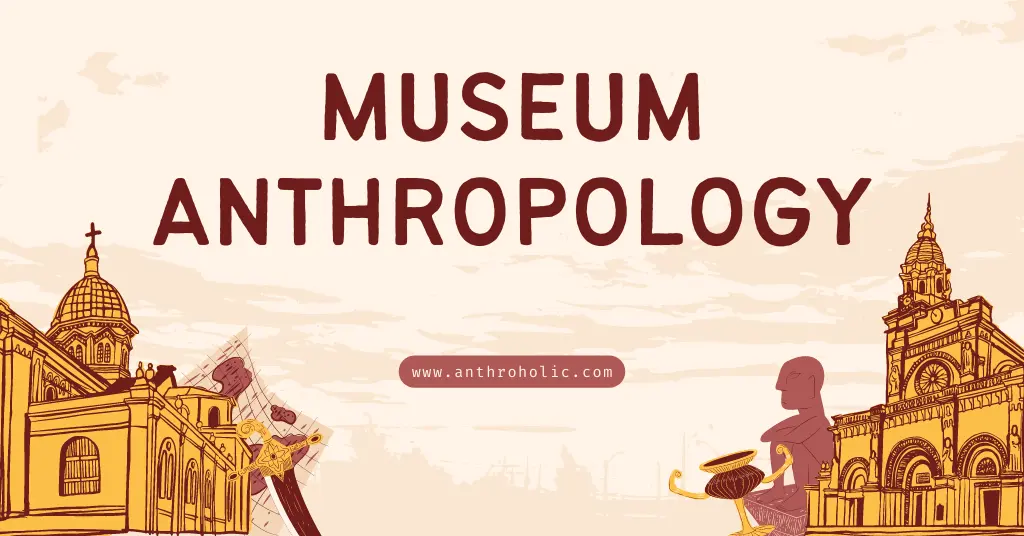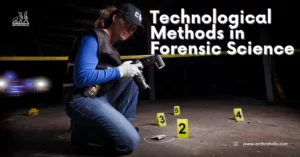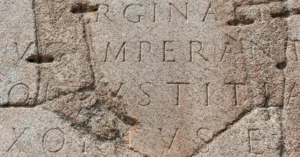AI Answer Evaluation Platform Live Now. Try Free Answer Evaluation Now
Museum Anthropology
Museum Anthropology is a branch of anthropology that focuses on the study of museums and their role in society. It looks at how museums collect, display, and interpret objects from different cultures, helping us learn more about human history and diversity. Museum anthropologists work closely with other professionals, like curators and educators, to create meaningful experiences for visitors in museums.

The Importance of Museum Anthropology
Museum Anthropology is essential for several reasons:
- Cultural Preservation: Museums play a vital role in preserving the artifacts and objects of various cultures. This helps future generations learn about their heritage and the diversity of human societies.
- Education and Public Engagement: Museum Anthropology helps create engaging exhibits and programs that teach people about different cultures and histories, making museums more interesting and informative.
- Promoting Cultural Understanding: By showcasing the diversity of human cultures, Museum Anthropology helps promote understanding, tolerance, and respect among people of different backgrounds.
Museum Anthropology in Action: Case Studies
Case Study 1: The British Museum’s Africa Galleries [3]
The British Museum in London has an extensive collection of African art and artifacts. With the help of museum anthropologists, the museum redesigned its Africa Galleries in 2021 to provide a more comprehensive and engaging experience for visitors. The new galleries focus on the diversity, creativity, and resilience of African cultures, highlighting the continent’s contributions to the world. Museum anthropologists collaborated with African artists, scholars, and communities to ensure the galleries represented African perspectives and experiences.
Case Study 2: The National Museum of the American Indian [4]
The National Museum of the American Indian in Washington, D.C., is a great example of how Museum Anthropology can create meaningful experiences for visitors. The museum works closely with Native American communities to ensure their stories, histories, and cultures are accurately represented. By involving community members in the creation of exhibits, the museum is able to provide authentic and engaging experiences that promote understanding and respect for Native American cultures.
The Challenges of Museum Anthropology
Museum Anthropology faces several challenges, such as:
- Ethical Concerns: Museums often hold artifacts that were taken from their original cultural context, sometimes without the consent of the communities they belong to. Museum anthropologists must navigate the complex issue of repatriation (returning objects to their rightful owners) and work to ensure ethical practices in collecting and displaying objects.
- Limited Resources: Many museums have limited resources, making it challenging for museum anthropologists to create engaging exhibits and programs that cater to diverse audiences.
- Balancing Multiple Perspectives: Museum anthropologists must consider various perspectives when interpreting objects and artifacts. They need to balance the desires of the communities represented, the museum’s goals, and the interests of the general public.
The Future of Museum Anthropology
As the world becomes more interconnected and diverse, Museum Anthropology will continue to play a crucial role in promoting cultural understanding and appreciation. By harnessing new technologies, like virtual reality and augmented reality, museum anthropologists can create even more immersive and engaging experiences for visitors. Additionally, collaborative projects between museums and cultural communities will become increasingly important, ensuring that the voices and perspectives of those represented are accurately and respectfully shared.
Encouraging Young Minds to Explore Museum Anthropology
Museum Anthropology is an exciting field with many opportunities for young people to get involved. Here are some ways to encourage a 12-year-old to explore Museum Anthropology:
- Visit Museums: Visiting museums with family or on school trips can spark curiosity and interest in Museum Anthropology. Engage in discussions about the exhibits and their cultural significance to foster a deeper understanding.
- Participate in Museum Programs: Many museums offer educational programs, workshops, and events designed for young people. These activities can provide hands-on experiences and insights into the world of Museum Anthropology.
- Read Books and Watch Videos: Encourage young minds to read books or watch videos about museums, anthropology, and different cultures. This can help them develop a strong foundation in the subject and inspire them to learn more.
- Volunteer or Intern at Museums: Volunteering or interning at a local museum can give young people valuable experience in the field of Museum Anthropology. They can learn from professionals and gain a better understanding of how museums work behind the scenes.
Exciting Careers in Museum Anthropology
Museum Anthropology offers a range of exciting career opportunities for young people interested in museums, culture, and history. Some possible career paths include:
- Museum Curator: Curators are responsible for managing a museum’s collections, organizing exhibits, and conducting research on artifacts. They work closely with museum anthropologists to ensure exhibits are engaging, educational, and culturally sensitive.
- Museum Educator: Museum educators create educational programs, workshops, and resources for visitors of all ages. They collaborate with museum anthropologists to develop content that accurately represents diverse cultures and histories.
- Collections Manager: Collections managers oversee the care, storage, and documentation of museum objects and artifacts. They work closely with museum anthropologists to ensure the proper handling and preservation of culturally significant items.
- Exhibition Designer: Exhibition designers create visually appealing and informative displays for museum exhibits. They collaborate with museum anthropologists to ensure the design showcases the cultural significance of the objects on display.
- Community Outreach Coordinator: Community outreach coordinators work to build relationships between museums and the communities they represent. They collaborate with museum anthropologists to develop programs and initiatives that involve local cultural groups and promote understanding and appreciation of diverse cultures.
Get Involved in Museum Anthropology Today
For young minds interested in Museum Anthropology, there are many ways to get involved and learn more about this fascinating field:
- Join Museum Clubs: Some schools or community centers may have museum clubs where young people can learn about museums, anthropology, and different cultures. Joining these clubs can provide valuable experience and networking opportunities.
- Attend Museum Conferences and Workshops: Many museums and cultural organizations host conferences and workshops focused on Museum Anthropology and related fields. Attending these events can provide valuable insights and learning opportunities for young people.
- Follow Museum Anthropology Blogs and Social Media: Many museum professionals and organizations share their work, research, and experiences on blogs and social media platforms. Following these sources can help young people stay informed about the latest developments in Museum Anthropology.
- Pursue Higher Education in Museum Anthropology: For those interested in pursuing a career in Museum Anthropology, obtaining a degree in anthropology, museum studies, or a related field can provide a solid foundation for future success.
Technological Advances in Museum Anthropology
As technology continues to evolve, Museum Anthropology has also been transformed by various innovations that enhance the visitor experience and facilitate the study of cultures. Some notable technological advances include:
- Virtual Reality (VR) and Augmented Reality (AR): VR and AR technologies allow visitors to immerse themselves in virtual environments or interact with digital elements superimposed on physical objects. These technologies can create more engaging and educational experiences, such as virtual tours of ancient sites or interactive displays of artifacts.
- Digital Archiving and 3D Scanning: Digital archiving and 3D scanning technologies help museums preserve and document their collections more efficiently. They also allow researchers to study artifacts in greater detail without the need for physical handling, which can damage delicate items.
- Online Exhibitions and Collections: Museums are increasingly making their collections and exhibits available online, allowing people worldwide to access and learn about different cultures and histories. This expands the reach of museums and makes their resources more accessible to diverse audiences.
- Interactive Displays and Multimedia: Interactive displays and multimedia elements, such as videos, audio recordings, and touchscreens, can make exhibits more engaging and informative. They allow visitors to explore information in-depth and at their own pace, catering to different learning styles and preferences.
Collaborative Projects in Museum Anthropology
Collaboration is essential in Museum Anthropology, as it enables museums to work together with the communities they represent, as well as other institutions and experts in the field. Some examples of collaborative projects include:
- The Museum of Anthropology at the University of British Columbia’s Reciprocal Research Network (RRN) [1]: The RRN is a collaborative online platform that connects museums, researchers, and Indigenous communities, enabling them to share knowledge, resources, and expertise related to the study of cultural artifacts.
- The Smithsonian Institution’s National Museum of African American History and Culture (NMAAHC) and its collaboration with the African Diaspora [2]: The NMAAHC works closely with cultural institutions and communities across the African Diaspora to collect, preserve, and share the stories and experiences of people of African descent.
By working together, museums, communities, and experts can create more authentic, engaging, and meaningful experiences for visitors and ensure that the diverse cultures and histories represented in museums are accurately and respectfully showcased.
See Also
Journals
Here are some major journals related to museum anthropology:
- Museum Anthropology – The official publication of the Council for Museum Anthropology, a section of the American Anthropological Association. Official Website: https://museumcouncil.americananthro.org/museum-anthropology-journal/
- Curator: The Museum Journal – Covers various aspects of museum work, including museum anthropology, museum management, and collection care. Official Website: https://onlinelibrary.wiley.com/journal/21516952
- Museum and Society – An independent peer-reviewed journal that focuses on the social and cultural significance of museums and their collections. Official Website: https://www2.le.ac.uk/departments/museumstudies/museumsociety
- Museum International – A UNESCO publication that covers various aspects of museums, including anthropology and cultural heritage management. Official Website: https://en.unesco.org/museum-international
- Journal of Material Culture – Although not exclusively focused on museums, this journal is relevant as it covers the study of material culture, which often intersects with museum anthropology. Official Website: https://journals.sagepub.com/home/mcu
- International Journal of Heritage Studies – Addresses various aspects of cultural heritage, including museums and anthropology. Official Website: https://www.tandfonline.com/toc/rjhs20/current
Important Persons in Museum Anthropology
- Augustus Pitt Rivers (1827–1900)
- Franz Boas (1858–1942)
- Lev Sternberg (1861–1927)
- Henry Balfour (1863–1939)
- George A. Dorsey (1868-1931)
- Ales Hrdlicka (1869-1943)
- James W. VanStone (1925–2001)
- William C. Sturtevant (1926–2007)
- Michael Ames (1933–2006)
- Margaret Mead (1901-1978)
- Claude Lévi-Strauss (1908-2009)
- Susan Hiller (1940-2019)
References
[1] Museum of Anthropology at the University of British Columbia. (n.d.). Reciprocal Research Network. Retrieved from https://moa.ubc.ca/research/rrn/
[2] National Museum of African American History and Culture. (n.d.). About the Museum. Retrieved from https://nmaahc.si.edu/about/museum
[3] https://www.britishmuseum.org/collection/galleries/africa



